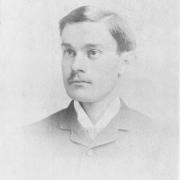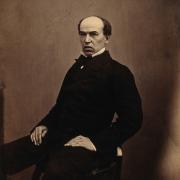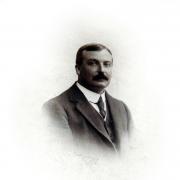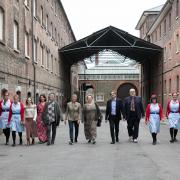Neglected for years, battered by the Great Storm and on English Heritage's 'At Risk' register since 1957, there seemed little hope for Kent's Westenhanger Castle and its once-magnificent barn. Until new owners the Forge family stepped in
Westenhamger Castle and Great Barn – a restoration project
Neglected for years, battered by the Great Storm and on English Heritage’s ‘At Risk’ register since 1957, there seemed little hope for Kent’s Westenhanger Castle and its once-magnificent barn. Until new owners the Forge family stepped in
With a hammerbeam roof similar to those found in royal residences such as Eltham Palace, the barn at Westenhanger clearly illustrates the castle’s forgotten glory. Unfortunately, the Great Storm of 1987 speeded up the insidious damage of many years of neglect and the structure was added to English Heritage’s ‘Heritage at Risk’ register.
New owners the Forge family decided that, having survived 400 years, the Westenhanger Castle barn was not going to be allowed to fall apart for want of a little TLC.
Westenhanger Castle began as a Saxon manor, but most of the visible remains belong to a 14th-century moated castle which was subsequently converted into a palace of sufficient grandeur for it to have been owned and visited by both Henry VIII and Elizabeth I.
Thomas Smythe first lived in the castle as a kind of caretaker for Elizabeth and afterwards purchased it from her. Known as ‘Customer’ Smythe, he had nothing to do with shopping, but in an age when jobs were purchased so that their holder might make money out of them, Smythe purchased the office of the customs on an annual lease.
He made so much money out of his office – Raleigh himself thought that Walsingham, Leicester and Burleigh, Elizabeth’s chief minister, were ‘all three pensioners to Customer Smythe’ – that the queen fined him. Several times.
Much of the wealth he made from customs he lavished on Westenhanger, not least on the building of a huge and magnificent barn with a hammerbeam roof and four full-height wagon porch doors, with windows, doors and plinth of Caen stone imported from Normandy.
Part of the barn even spans the East Stour stream. No one knows why the barn should have been built with such grandeur, but perhaps he took some of the perquisites of his job in kind and needed somewhere to store them?
Having decayed gradually during the 20th century, chronic damage was intensified when the barn lost most of its tiles during the Great Storm of 1987. Its then owner removed those remaining and covered the entire roof with roofing felt. Neither adequate protection, nor hard wearing, the felt rotted, water started to penetrate the timbers, and the death watch beetle helped its demise.
This is an awe-inspiring space. Standing inside it is like being in one of the greatest cathedrals in England
By 2002, when the Forge family was able to purchase the barn, several timbers were in danger of causing the roof, including one of the hammerbeams, to collapse.
The restoration project was huge and needed considerable funds. A grant was obtained from English Heritage to erect more than 300 tons of scaffold which covered the entire building with a temporary roof and supported the collapsing timbers inside until further funding could be raised.
Restoration work actually began in January 2007, took two and a half years and cost around a million pounds, half of which came from English Heritage and the other half from the castle’s own fundraising.
A giant jigsaw puzzle
To gain access to essential timbers, the entire structure had to be dismantled in sections, and rebuilt using as much of the original material as possible. Peter Massey, lead carpenter at Westenhanger explains: “We’ve worked tirelessly to the highest standards out of respect for the history and quality of the building.
“Many of the tools used mirrored those used more than 400 years ago and the techniques we used matched closely those of the original builders. We wanted to keep as much authenticity of the building as possible.”
Each of the 1,000 pieces of oak which made up the structure, some weighing as much as half a ton, had to be numbered, before being gently disengaged. The numbered code guaranteed that the original timbers were reassembled in the right order and also that the very few replacement sections could be slotted in easily.
More than 90 per cent of the original timbers were reused. John Forge, the project manager and son of the owner, comments: “There are no books of instruction on how to dismantle mediaeval timbers, so it was a delicate and difficult task.
“We had to support each section of the roof in turn and then drive out the joint pegs piece by piece, being careful not to damage the intricate jointing.”
Removing no more than three bays at a time, three master craftsmen worked full time in all weathers, completing the job in September 2009. Riven oak laths were used to support the Kent peg tiles, each of which was torched with lime plaster.
Such was the high-class Elizabethan craftsmanship that very little work needed doing to the 400-year-old Kentish Ragstone walls, apart for some re-pointing. All the mortar was galletted, ie decorated with small stones or flint chips (a gallet is a pebble) both inside and out.
The hard work meant that the barn was at last removed from the Heritage at Risk register and restored to the glory it must have enjoyed when it was newly built 430 years ago.
As Simon Thurley, chief executive of English Heritage says: “This is an awe-inspiring space. Standing inside it is like being in one of the greatest cathedrals in England. Hammerbeam roofs are an impressive technical achievement and it is extraordinary to find one in the middle of rural Kent and now in such magnificent condition.”
Adds Peter Kendall, also of English Heritage and team leader for Kent and East Sussex: “The barn is Grade 1 listed and a scheduled ancient monument. You don’t get much better than that.”
Fit for kings
The magnificence of the barn is a good indication of the former magnificence of the house, which is still impressive even at its reduced size. Westenhanger took Henry VIII’s fancy and he ‘persuaded’ the owner, Thomas Poynings to exchange it for some land in Dorset.
Henry spent a large sum of money ‘making it fit for a royal residence’, putting in new garderobes, and improving the kitchens by building three great hearths for roasting meat. Remains of the hearths have recently been uncovered and replica kitchens are being built using the original foundations.
The king also built accommodation specifically for his entourage – Smythe built his barn next to it – which would have served as living quarters, horse stables and storage. The owners hope to begin work on restoring the accommodation shortly.
From being a magnificent palace with 126 rooms, the castle had been gradually stripped of all its valuables, and much of its stonework sold. Years of neglect and disrepair culminated in 1957, when it was noted as a building at risk.
Still, nothing was done until in November 1996 the house was purchased by the Forge Family. The owners of the Smythe barn would not part with it until 2002 and it is the latest in a long line of restoration projects.
Owner of Westenhanger, Graham Forge says about the barn: “My ambition has always been to restore the building, simply because it was worth doing. It has been very difficult to get the financial support and has taken us two and a half years from start to finish, but it’s glorious to see it now.
“We’re so grateful to everyone who has supported us, especially English Heritage as we could not have done all this work without their invaluable help.”
Although there is still much work to be done on the rest of the castle, the restoration of Smythe’s barn and its removal from the at risk register, is a glorious sign that Graham and his family are succeeding.
DID YOU KNOW?
Previous owners of Westenhanger have included King Cnut, Folkestone Racecourse and the Ministry of Transport
The Smythe barn is one of only two Grade I listed barns in England with a hammerbeam roof. The other is at Winterborne Clenston in North Dorset
A hammerbeam roof is one with short, supported, horizontal beams which look like wooden brackets, and which themselves support arched braces and struts
The barn roof is covered with 58,000 tiles and 5.5 miles of riven oak battens
In the lime plaster topping to the 3ft thick ragstone walls of the barn were footprints of Elizabethan builders
In the mid 17th century, Westenhanger Castle was the second largest house in Kent
In 1691 Westenhanger Castle was damaged by an earthquake
The Rosamund tower is named after Rosamund de Clifford, mistress to Henry II. A lady in a long flowing dress has been reported walking between Rosamund’s Tower and the Dovecote Tower – could this be Rosamund?
The voyage of Discovery
Thomas Smythe’s son, also Thomas, grew up at Westenhanger before moving to London to seek his fortune. He was treasurer of the London Company and sought James I’s approval to sail three ships to the New World.
He was granted approval but no cash and ended up funding around two thirds of the cost of the voyage himself. In 1606, 14 years before the pilgrim fathers, three ships sailed from London to Chesapeake Bay where, on 14 May 1607 in what was to become Virginia, they founded Jamestown, the first English-speaking settlement in America.
The Discovery, a 20-ton flyboat, was the smallest of the three ships which sailed to Virginia; the others were the Susan Constant and the Godspeed. A replica of Discovery made in Jamestown is now on permanent display at Westenhanger Castle.
Virtue triumphant
In 1382 the widowed Lady Lettice de Kiriel (de Crioll, owners of Westenhanger 1272-1461) accused Sir John de Cornwall of attempting to abduct her. The Calendar of Patent Rolls and Calendar of Inquisitions Post Mortem states: “The court and entourage of our young King Richard have been concerned at the scandalous attempt at Westenhanger, in the county of Kent, by a band of miscreants to abduct the Lady Dowager from her Castle.’
Sir John, with nine named accomplices, set up ladders against the walls, climbed over during the night and entered the castle. They were looking for the lady. Sir John, landless and ambitious, wanted to take not only Lady Lettice but the castle and its vast lands.
Rushing from her bedchamber, as soon as she knew what was happening, Lady Lettice plunged into the moat, sinking up to her neck and nearly drowning, but managing to evade their clutches.
Cornwall and his band had to leave without her, but not before they had assaulted the Kiriel servants and stolen 12 valuable horses in order to make their escape.
Treachery baffled
During the Commonwealth, Sir Richard Willis hired Westenhanger, still at that time purportedly in the ownership of the Smythe family, and urged the future Charles II to return to England and live in the house to give encouragement to those who were fighting for his restoration.
A date was set for Charles’ departure from Brussels, but Willis was in the pay of Cromwell and thousands of armed men were instructed to hide in the woods around Westenhanger to murder Charles, his entire household and as many followers as he brought with him.
Samuel Morland, Thurloe’s secretary, was apparently asleep at his desk and overheard the plan discussed. Morland managed to get a letter sent to Charles to warn him and the voyage was abandoned in the nick of time.
2010 opening times
Westenhanger Castle and barns are open on Easter Monday and then every Tuesday from 6 April to 7 September, from 10am to 5pm.
Any visitor arriving with a copy of Kent Life containing this article will be entitled to �1 discount.
For more information about the castle and its special events, tel: 07984 132962


























